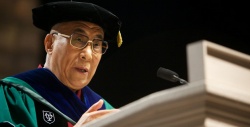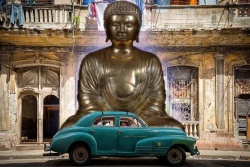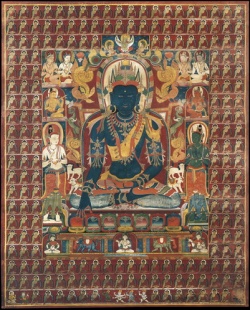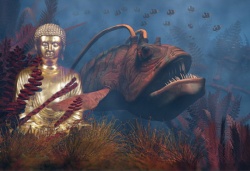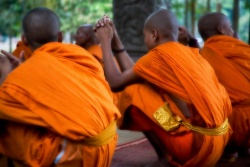Using the Golden Urn
As the degenerate age gets worse, and as more reincarnations of high Lamas are being recognized, some of them for political motives, increasing numbers have been recognized through inappropriate and questionable means, as a result of which huge damage has been done to the Dharma.
During the conflict between Tibet and the Gurkhas (1791-93) the Tibetan Government had to call on Manchu military support. Consequently the Gurkha military was expelled from Tibet, but afterwards Manchu officials made a 29-point proposal on the pretext of making the Tibetan Government’s administration more efficient.
This proposal included the suggestion of picking lots from a Golden Urn to decide on the recognition of the reincarnations of the Dalai Lamas, Panchen Lamas and Hutuktus, a Mongolian title given to high Lamas.
Therefore, this procedure was followed in the case of recognizing some reincarnations of the Dalai Lama, Panchen Lama and other high Lamas.
The ritual to be followed was written by the Eighth Dalai Lama Jampel Gyatso.
Even after such a system had been introduced, this procedure was dispensed with for the Ninth, Thirteenth and myself, the Fourteenth Dalai Lama.
Even in the case of the Tenth Dalai Lama, the authentic reincarnation had already been found and in reality this procedure was not followed, but in order to humour the Manchus it was merely announced that this procedure had been observed.
The Golden Urn system was actually used only in the cases of the Eleventh and Twelfth Dalai Lamas.
However, the Twelfth Dalai Lama had already been recognized before the procedure was employed.
Therefore, there has only been one occasion when a Dalai Lama was recognized by using this method.
Likewise, among the reincarnations of the Panchen Lama, apart from the Eighth and the Ninth, there have been no instances of this method being employed.
This system was imposed by the Manchus, but Tibetans had no faith in it because it lacked any spiritual quality.
However, if it were to be used honestly, it seems that we could consider it as similar to the manner of divination employing the dough-ball method (zen tak).
In 1880, during the recognition of the Thirteenth Dalai Lama as the reincarnation of the Twelfth, traces of the Priest-Patron relationship between Tibet and the Manchus still existed.
He was recognized as the unmistaken reincarnation by the Eighth Panchen Lama, the predictions of the Nechung and Samye oracles and by observing visions that appeared in Lhamoi Latso, therefore the Golden Urn procedure was not followed.
This can be clearly understood from the Thirteenth Dalai Lama’s final testament of the Water-Monkey Year (1933) in which he states:
“As you all know, I was selected not in the customary way of picking lots from the golden urn, but my selection was foretold and divined. In accordance with these divinations and prophecies I was recognized as the reincarnation of the Dalai Lama and enthroned.”
When I was recognized as the Fourteenth incarnation of the Dalai Lama in 1939, the Priest-Patron relationship between Tibet and China had already come to an end.
Therefore, there was no question of any need to confirm the reincarnation by employing the Golden Urn.
It is well-known that the then Regent of Tibet and the Tibetan National Assembly had followed the procedure for recognizing the Dalai Lama’s reincarnation taking account of the predictions of high Lamas, oracles and the visions seen in Lhamoi Latso; the Chinese had no involvement in it whatever.
Nevertheless, some concerned officials of the Guomintang later cunningly spread lies in the newspapers claiming that they had agreed to forego the use of the Golden Urn and that Wu Chung-tsin presided over my enthronement, and so on.
This lie was exposed by Ngabo Ngawang Jigme, the Vice-Chairman of the Standing Committee of the National People’s Congress, who the People’s Republic of China considered to be a most progressive person,
at the Second Session of the Fifth People’s Congress of the Tibet Autonomous Region (31st July 1989).
This is clear, when, at the end of his speech, in which he gave a detailed explanation of events and presented documentary evidence, he demanded:
“What need is there for the Communist Party to follow suit and continue the lies of the Guomintang?”
